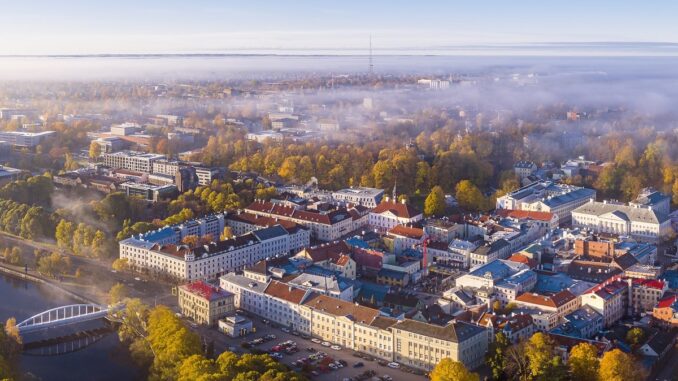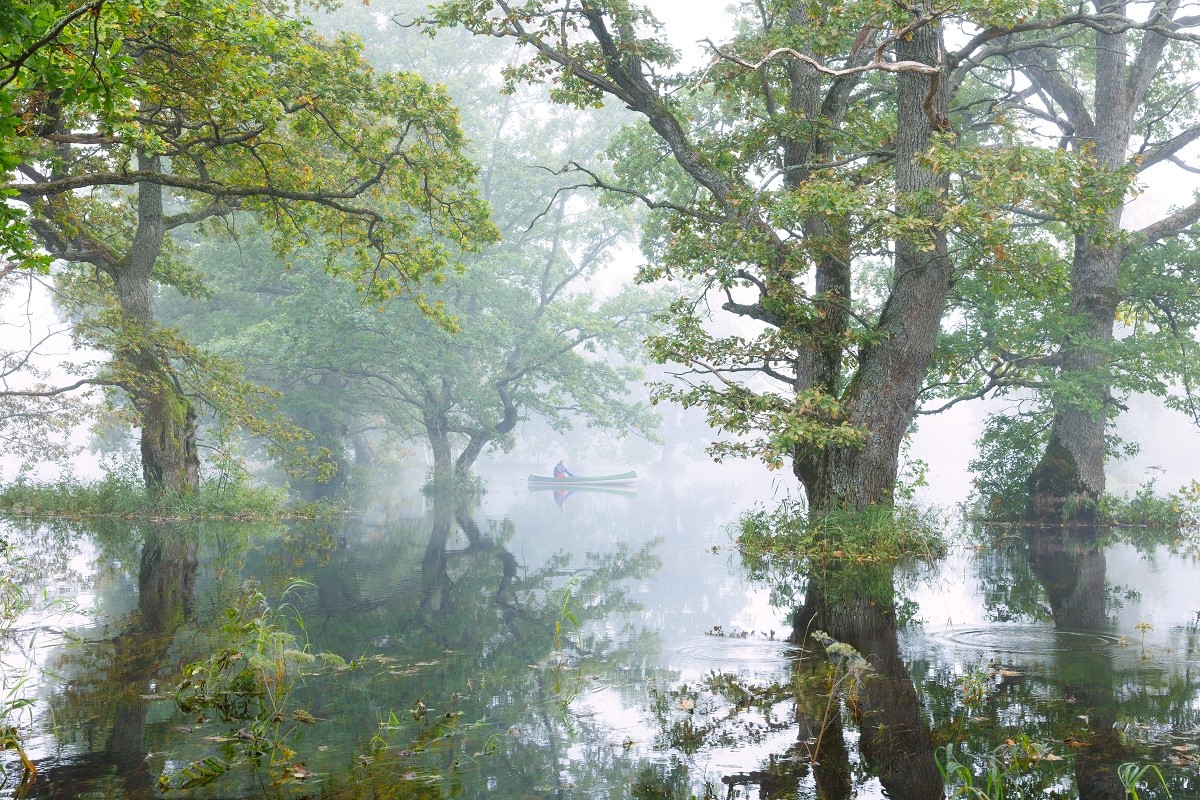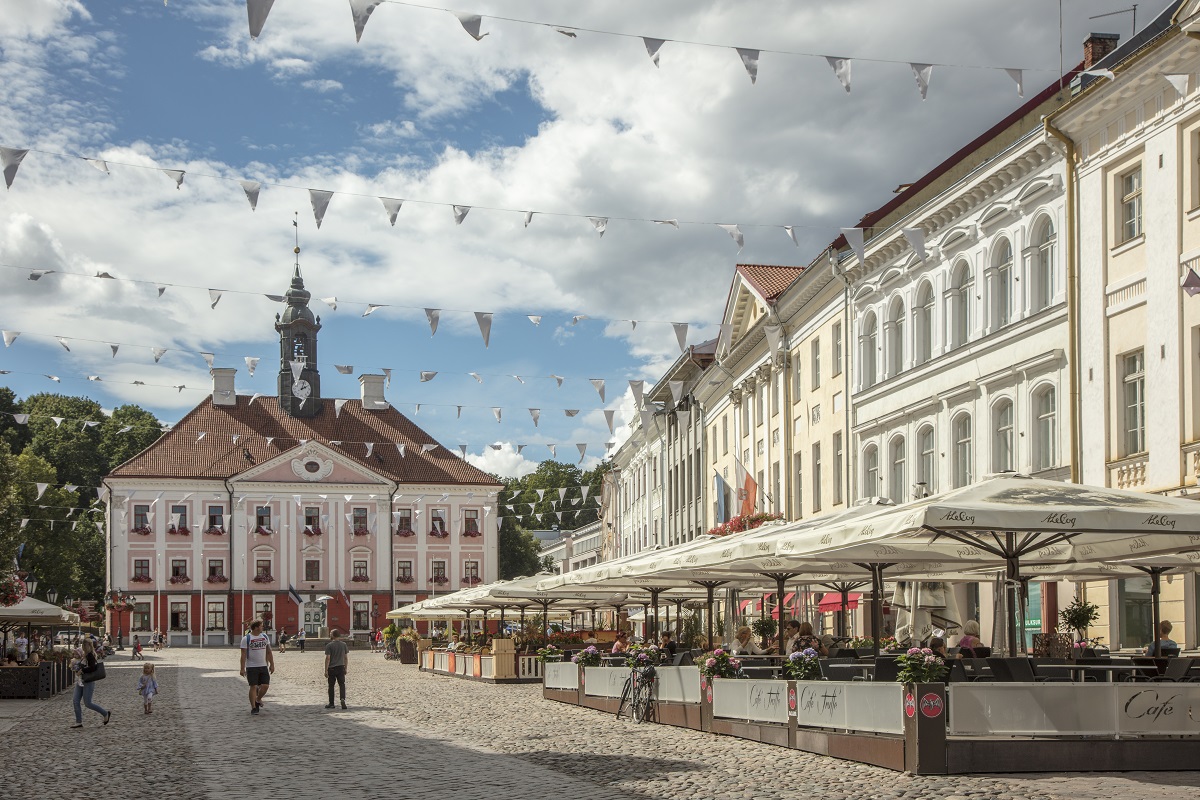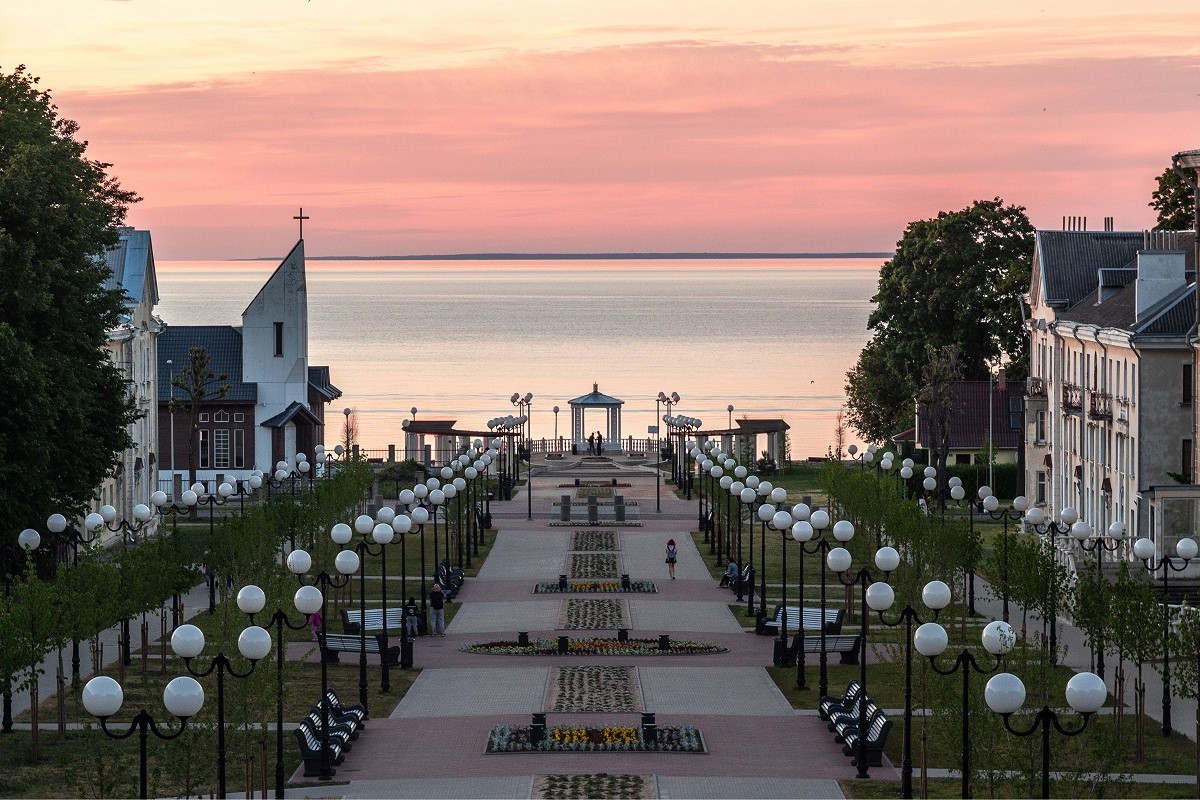
With an infectious grin and a healthy dose of enthusiasm our guide Jaana Hinno encouraged us to open our eyes and enjoy her chocolate box home city.
Hidden deep in the forests of southern Estonia, Viljandi is just adorable, and it was easy to see just why Jaana loves it so much.
Like much of Estonia, the lack of locals gives the visitor a chance to breathe in the crystal air and drink in the beauty of place, which may be small, but packs a real punch when it comes to nature and history.
Not interested in bombarding us with dates (after all, Jaana told us, that is what Google is for!) she just wanted us to concentrate on enjoying what was in front of us, as the country gears up to welcome the world to its second city of Tartu, European Capital of Culture, 2024, with organisers keen for people to take in the whole of the country, which is just a little bigger than Denmark.
Viljandi lies on the shore of a picturesque lake and one of the best times to appreciate its beauty is early morning with a cup of tea and sitting on the well placed bench in the ruins of the 13th century Teutonic castle.
The backdrop of the castle walls, eaten away by time and fighting, lush forests and spotless scenery are simply stunning and it’s no wonder the city is used as a set for films.
At the heart of Viljandi is the wonderfully renovated Schloss Fellin Boutique Spa, a former manor house dating back to the 1880s and now home to 17 luxury rooms, a gourmet restaurant and impressive spa. From your bedroom window, you are treated to views of the manor park and the open air Ugala Theatre.

On your travels around the city, you will see lots of cat statues in honour of the feline population and plump ceramic strawberries, which guide you to the art museum. Every July this cool spot plays host to the world famous Viljandi Folk Festival, which attracts performers and audiences from across the globe, who cross a beautiful old fashioned suspension bridge to the castle to join in the fun.
A 40 minute drive takes you deep into the forest and into the heart of the Soomaa National Park, where the weather creates a fifth season in early spring as melted snow or heavy rain floods all the lower forests, roads and even people’s back gardens.
Taking a stroll along a man-made boardwalk in April, the marks on the tall trees indicate just how high the water levels reach, making it an ideal route for canoeists paddling alongside the soft bog like pastures. It’s an incredible sight and the flora and fauna mixing with the forest animals, makes it a very special place to be.
Nature is set to play a big role in the capital of culture celebrations. Estonia’s second biggest city Tartu is known for its laid back style, largely due to its university which dates back to 1632.
A programme packed with cultural events is designed to bring in the visitors from 19th October, when the event is launched.
Already recognised by UNESCO as a child friendly city, Tartu has a fun vibe about it, summed up by the kissing statue inside a fountain at the top of town hall square, where newlyweds and graduating students jump in to mark their newfound freedom.
The oldest city in the Baltics is an architectural gem, with buildings from Hanseatic League medieval times standing next to tasteful modern creations and one of its major attractions, just outside the city, is The Estonian National Museum, featuring exhibitions which spell out the country’s rich history through art, music, culture and most interestingly real life tales of how people fought and achieved independence in 1991 from the Soviet Union. Next to the museum is a fun upside down house to test your balance.

The Emajõgi river flows through the city and a great way of seeing the sights is via the Jõmmu Barge, the only remaining one of its kind in the world. The wooden vessel was a popular sight from Hanseatic times until the mid-20th century and used to carry goods.
Today, volunteers are building a second replica barge which will also be used for trips on the river, Lake Peipus and Lake Võrtsjärv, and it’s here you can witness the country’s obsession with wooden saunas. Floating on water, they are a nod to the community of nearby Võru, which is recognised by UNESCO for its traditional smoke sauna houses.
Accommodation wise, Tartu can get busy and capital of culture organisers are hoping to encourage locals to offer home stays or for tourists to head a little out and enjoy the delights of such places as Mooste Distillery, part of a 1900s manor estate, with six rooms and a breakfast and dinner menu which sources local produce.
Tradition and culture is a big thing in Estonia and 40 kms from Tartu and on the forested shorelines of Lake Peipsi, there are villages full of the old believers sect, Eastern Orthodox Christians, who cultivate a particularly pungent species of onion, which they use for cooking and handicrafts along The Onion Route.
The country’s third city Narva in the north, has an intriguing feel to it and is rich in history. Dominated by two facing fortresses, one in Estonia and the other across the border in Russia, it is a must place to visit.
Built in 1256, Hermann, also known as Narva Castle is divided from the Ivangorod fortress by water and has been beautifully restored, with aspects of old and new, and the museum inside has been made child friendly with hi tech games and cartoons to spell out its history. Narva’s war bunkers used to protect locals are also worth a look.
Currently the border between Estonia and Russia is closed due to the war in Ukraine, so it’s interesting to be so close and take a peek at how daily life is still going on.

The Narva River also separates the now derelict and huge Kreenholm factory which was built on an island and was the biggest textile manufacturer in Europe. Having a toe in both countries meant the city had the most modern industrial buildings in the Russian empire.
Its links to the north of England are reflected in its fine red brick architecture and at one time, it employed 8,000 people. The vast site closed down officially in 2010 and since then it has been used occasionally for outdoor concerts, with investment on hold as the conflict continues.
The site has an eerie feel to it, and you can imagine it at its height of production, with a roaring waterfall and an imposing statue dedicated to the workers who started Estonia’s first labour strike in 1872.
Narva has a lovely old-fashioned promenade to stroll along and just 10 minutes out of town lies the picturesque town of Sillamäe, with its beautiful old buildings and a welcoming seafront.
Estonia is known for its spas and the Meresuu Spa & Hotel next to the country’s longest sandy beach is a short hop from Narva and has seven different saunas including two outdoor wooden ones.
It’s testament to this clean, calm and ever so charming country, which is just crying out for more visitors to fall in love with it.
Factfile
Travel to Estonia with Air Baltic, which operates out of London Gatwick and flies to the capital Tallinn, and where bus and train routes make travelling around the country quite easy.
The super helpful Visit Estonia tourist board staff can help you plan your itinerary.
Author Bio:
Rebecca Hay is an experienced travel writer and member of The British Guild of Travel Writers. Follow her adventures with her family on Twitter and Instagram @emojiadventurer and on Facebook via EmojiAdventurers2.
Photographs courtesy of Visit Estonia


Be the first to comment